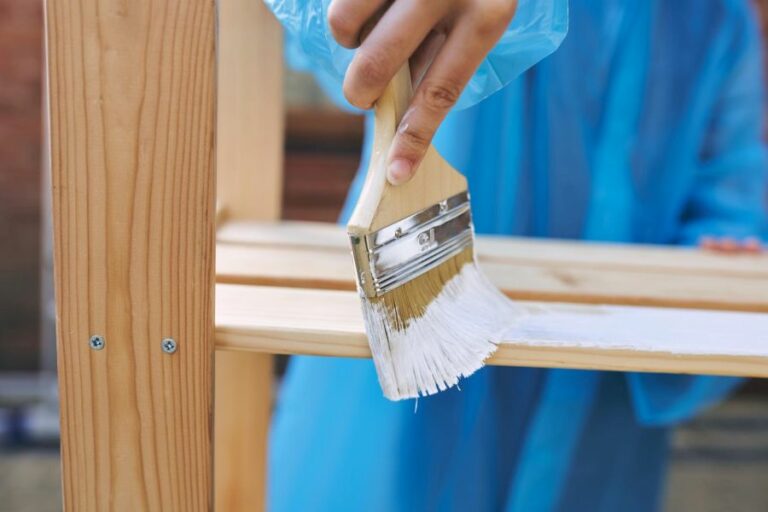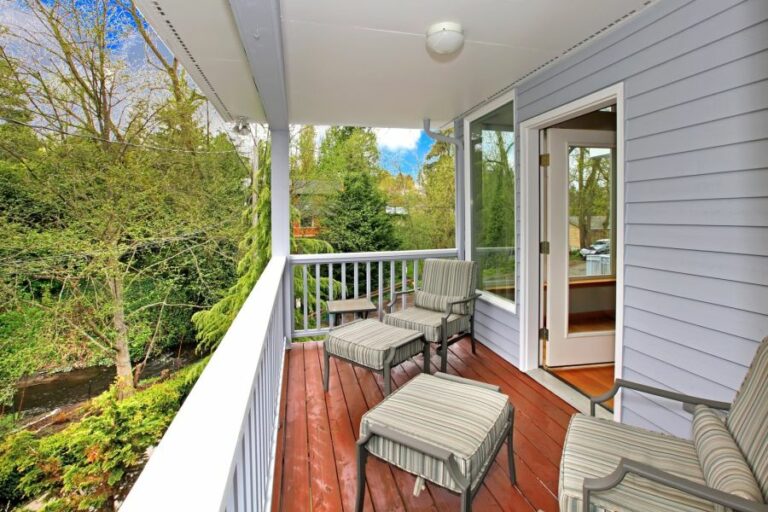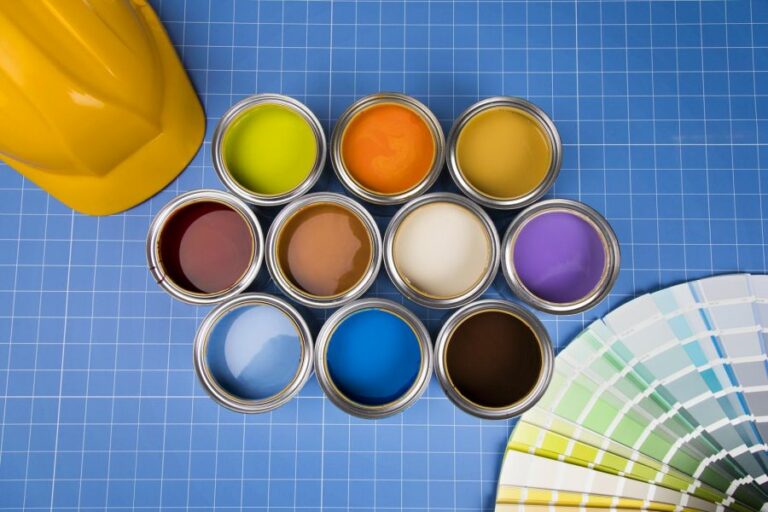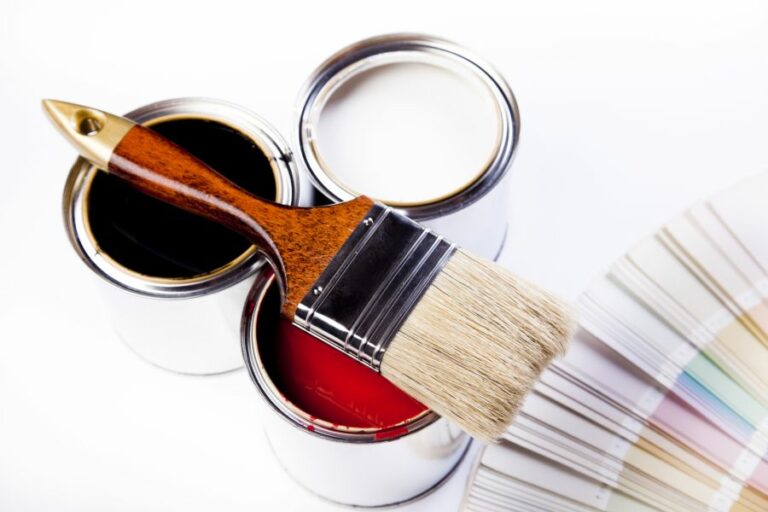Outdoor Paint Ideas For Houses, 25 Things You Should Know
Unleash your home’s true potential with a stunning outdoor paint makeover! This blog post, ‘Outdoor Paint Ideas for Houses,’ brings you diverse, vibrant color schemes and inspirations. Discover innovative tips for selecting the right exterior paint shades to boost curb appeal and breathe new life into your home.
Outdoor paint ideas for houses:
The exterior paint of a house significantly impacts its curb appeal and overall impression. Choosing a paint scheme depends on the house type and style, with classic combinations like white with black trim for traditional homes and bold choices like dark gray with white or yellow accents for modern homes. Coastal homes benefit from ocean-inspired colors like soft blues and greens. When selecting paint colors, consider the home’s architecture, surrounding environment, lighting conditions, testing on a small area, and consulting professionals for recommendations.

Unlock your home’s full potential with these outdoor paint ideas! Discover timeless classics, daring trends, and top tips to guide you through the process, ensuring that your house stands out on the block with style and elegance.
Contents
- 1 Exterior House Painting Concepts for Residential Homes
- 2 What are the most appealing exterior paint colors for a residential property?
- 3 What is the Finest Exterior Paint Suitable for Aging Homes?
- 4 Which Two Complementary Colors Are Aesthetically Pleasing for a House Exterior?
- 5 What are the most suitable exterior paint colors for a hot climate?
Exterior House Painting Concepts for Residential Homes
The exterior of a house is the first thing people notice when they visit or pass by. It sets the overall impression of the house and can significantly enhance its curb appeal. Therefore, choosing the right outdoor paint scheme is vital for any homeowner.
• Classic Paint Combinations for Traditional Houses
Traditional houses often look best with classic paint combinations that have passed the test of time. The primary aim should be to enhance the home’s architectural features while respecting its history. Some popular color combinations for traditional homes include:
1. White with Black Trim
A classic white house with black trim can never go wrong. This color combination works well in most architectural styles and exudes elegance and sophistication. Pairing the white walls with black trim creates a clean and crisp contrast that highlights the intricate details of the house’s design.
2. Gray with White Trim
Gray is a versatile and timeless color that provides a subtle yet sophisticated look to the exterior of a house. Pairing various shades of gray with crisp white trim creates a soothing effect and highlights the house’s architectural features.
3. Beige with White or Cream Trim
Beige is a warm, timeless color that works well with various house styles. Pairing beige with cream or white trim creates an inviting and comfortable atmosphere for the home. This color combination suits all traditional houses, from colonial to Mediterranean architecture.
• Bold Paint Choices for Modern Homes
Modern homes often come with unique and unusual features that may not be present in traditional houses. Therefore, they may require bold and eye-catching paint choices to make the design elements stand out. Some popular paint combinations for modern homes include:
1. Dark Gray with White or Yellow Accents
Dark gray is a strong and bold color that makes a significant impact when used as the primary paint color for a modern house. Accentuating the gray with contrasting white or vibrant yellow elements can create a dramatic effect and make a powerful statement.
2. Black with Metallic or Wood Accents
Black exteriors can create an imposing and sophisticated look for a modern home. To elevate the design further, consider adding metallic or wood accents against the dark background, such as brushed steel or natural wood elements in doors or window frames.
3. Vibrant Colors with Neutral Accents
For those who wish to make a bold statement, consider painting the exterior of your house with a vibrant color, such as deep blue, striking red, or even a vivid green. Pair the exciting colors with neutral accents like gray, white, or light beige to balance out the intensity.
• Coastal and Beach House Paint Ideas
Choosing paint colors that evoke a sense of coastal living is essential for homes located in coastal areas or designed to have a beach house feel. Popular beach-inspired paint combinations include:
1. Soft Blues and Greens with White Trim
Soft blues and greens are reminiscent of the ocean and sky, creating a calming and serene atmosphere for your house. Pair these colors with crisp white trim to evoke memories of a vacation spent by the sea.
2. Coral or Salmon with White or Beige Trim
A coral or salmon-colored house has a cheerful and warm appearance that can make a statement in a coastal setting. Consider pairing this vibrant color with white or beige trim to create a balanced and harmonious look.
3. Gray or Driftwood with White Trim
Gray or driftwood colors capture the essence of weathered wood and create a laid-back, beachy vibe. Pairing these neutral hues with white trim provides a fresh, clean look that enhances the house’s coastal appeal.
• Tips for Choosing the Perfect Outdoor Paint Colors
- Consider your home’s architecture and style when choosing paint colors. Select colors that complement and enhance the architectural details of your house.
- Choose colors that coordinate with the surrounding environment, such as the natural landscape or neighboring homes.
- Take into account the impact of sunlight on your chosen colors. Different colors may appear significantly different under various lighting conditions.
- Test the colors on a small and inconspicuous area of the house’s exterior before committing to painting the entire house. This will allow you to see how the colors look when applied to your home and their overall impact.
- Consult with a professional painter or color consultant if you need help deciding which colors to choose. They can provide valuable recommendations on achieving the desired effect with your paint choices.
Considering the tips and paint ideas mentioned in this article, you can transform your house’s exterior into an eye-catching and captivating work of art that will make a lasting impression. Happy painting!
Color Scheme | Main Color | Secondary Color | Accent Color |
|---|---|---|---|
Classic White and Black | White | Black | Red door or black shutters |
Coastal Blues | Baby Blue | Teal | Sandy Beige |
Greige and White | Greige | White | Wooden accents |
Modern Farmhouse | Light Gray | Off-white | Black and white accents |
Rustic Earth Tones | Olive Green | Brown | Beige or Rose |
Bright and Colorful | Yellow | Teal or Blue | White or coral accents |
Warm Neutrals | Light Brown | Sandstone | Ivory or white accents |
What are the most appealing exterior paint colors for a residential property?
Selecting the perfect outdoor paint color for your house can be challenging, given the wide variety of options available in the market today. A well-chosen paint color can enhance your home’s curb appeal and reflect your style and personality.
Additionally, the right paint color can affect the overall value of your property.
• Factors to Consider Before Choosing an Outdoor Paint Color
Before diving into specific color recommendations, it’s important to consider the following factors that can impact your final decision:
– Architecture and House Style
Your house’s architectural style can heavily influence your paint color choices. For instance, Victorian homes may call for more flamboyant colors, whereas modern homes may require more subdued and minimalist options.
It’s crucial to research your home’s architectural style and pick historically appropriate colors or complement the design.
– Neighborhood Guidelines
If you reside in an area with specific neighborhood or homeowners’ association (HOA) guidelines, you may be required to adhere to certain color schemes or palettes. In such cases, it’s essential to consult with your HOA or neighbors before committing to a color choice.
– Surrounding Environment
Take into account the landscape, climate, and other environmental factors in your locality. Are you located in a wooded area? A coastal region? A desert landscape?
The surrounding environment can inspire color selection and help you to choose colors that are harmonious with your home’s surroundings.
– Personal Preference and Emotional Impact
Finally, don’t forget to factor in your personal style and preferences. While some colors may be popular or trending, choosing a color scheme that you love and feel comfortable with is essential, considering the emotional impact different colors can have.
• Neutral Colors: A Timeless Classic
Neutral colors are a popular choice for exterior paint, as they tend to be timeless and work well with numerous architectural styles. Some top neutral options include:
– Gray
Gray is a versatile color that can range from light to dark shades, making it suitable for various house styles. Light grays provide a clean and modern look, while dark shades can create a bold and dramatic effect.
Recommended Gray Shades:
- Light French Gray (Sherwin Williams)
- Classic French Gray (Sherwin Williams)
- Silver Chain (Benjamin Moore)
– Beige
Beige is another subtle yet stylish choice that offers a warm and inviting feel for home exteriors. It pairs well with white trim and accents and can look appealing with a variety of architectural styles.
Recommended Beige Shades:
- Accessible Beige (Sherwin Williams)
- Wheat Bread (Behr)
- Muslin (Benjamin Moore)
– White
White is the quintessential neutral color that signifies simplicity and elegance. It’s an excellent choice for classic, colonial, and modern homes and can be used as the main color or for trim and accents.
Recommended White Shades:
- Simply White (Benjamin Moore)
- Pure White (Sherwin Williams)
- Swiss Coffee (Behr)
• Earth Tones: Blending with Nature
Earth tones are an attractive option if you want your home’s exterior to harmonize with its natural surroundings. Some popular earth-tone colors include:
– Green
Green is a versatile color that comes in a wide range of shades, from soft sage hues to vibrant, organic shades. It can work well with many architectural styles and blend seamlessly with the surrounding environment.
Recommended Green Shades:
- Sage Green (Sherwin Williams)
- Olive Grove (Benjamin Moore)
- Cypress Green (Behr)
– Brown
Brown is a warm and inviting color that can create a cozy and comfortable atmosphere for your home’s exterior. This hue is versatile and timeless from light tan shades to deep, rich chocolates.
Recommended Brown Shades:
- Appalachian Brown (Benjamin Moore)
- Timber Bark (Sherwin Williams)
- Behr Chocolate Froth (Behr)
• Bold and Unconventional Choices
If you’re looking to make a statement with your home’s exterior, there are several bold and unconventional color options to consider:
– Blue
Blue is an unconventional color for home exteriors but can create a striking and sophisticated appearance when used correctly. Dark shades of blue work best with traditional architectural styles, whereas lighter hues can lend a beachy feel to coastal homes.
Recommended Blue Shades:
- Hale Navy (Benjamin Moore)
- Waterscape (Sherwin Williams)
- Tidewater (Sherwin Williams)
– Black
Black can make a dramatic statement for modern homes and is becoming an increasingly popular choice. Pairing black siding with white trim creates a bold and eye-catching contrast.
Recommended Black Shades:
- Iron Ore (Sherwin Williams)
- Carbon Black (Benjamin Moore)
- Black (Behr)
As you set out to select the best outdoor paint colors for your house, remember that the most important factor is to choose a color scheme that you love and can be proud of.
While it’s essential to consider your home’s architectural style, your local environment, and neighborhood guidelines, your personal preferences and style should ultimately guide your decision. Happy painting!
Color Name | Description |
|---|---|
Beige | A warm neutral color that blends well with natural elements and landscaping. |
Light Gray | A versatile neutral color that works well with various architectural styles and provides a clean, modern appearance. |
White | A timeless choice that is both classic and contemporary, providing a crisp, clean look while highlighting other exterior features. |
Navy Blue | A bold and sophisticated choice that pairs well with white trim and other bright accents for a striking contrast. |
Forest Green | A rich and earthy color that blends well with natural surroundings and provides a sense of tranquility. |
Red Brick | A warm and inviting color that complements traditional and colonial-style homes, providing a cozy, rustic feel. |
Slate Blue | A subtle blue-gray color that exudes elegance and works well with a variety of exterior materials and styles. |
Taupe | A neutral color with a blend of gray and brown, complementing a variety of other colors and elements for a balanced exterior appearance. |
What is the Finest Exterior Paint Suitable for Aging Homes?
When it comes to choosing the best exterior paint for old houses, one has to consider several factors to ensure a long-lasting, beautiful finish. These factors include the type of material, the environment, and the quality of the paint.
• The Different Types of Exterior Paints
– Oil-Based Paints
Oil-based paints have been used for centuries due to their durability and ability to adhere exceptionally well to various surfaces. They are especially suitable for old homes, as they provide a smooth finish and superior protection against moisture and outdoor elements.
Pros:
- Long-lasting finish
- Excellent adhesion to surfaces
- Resistant to water and moisture
Cons:
- Longer drying time
- Strong odor during application
- Harder to clean from brushes and rollers
– Water-Based (Latex) Paints
Water-based or latex paints have gained popularity in recent years due to their ease of application, quick drying time, and low odor. While not as durable as oil-based paints, latex paints still provide a reliable finish that can withstand extreme weather conditions.
Pros:
- Quick drying time
- Low odor during application
- Easier to clean from brushes and rollers
Cons:
- Less durable compared to oil-based paints
- May require multiple coats
– Paint and Primer in One
These types of exterior paints have gained popularity in recent years. They are designed to simplify the process by combining the primer and the paint in one product. They offer the advantage of saving time and effort during application.
Pros:
- Provides both primer and paint in a single product
- Saves time during application
Cons:
- May not work well on all surface types
- Not suitable for heavily damaged or chalking surfaces that require a separate primer
• Environmental Factors to Consider
– UV Resistance
Old homes often have significant sun exposure, which can lead to fading and a less vibrant finish over time. Therefore, it’s essential to choose a paint that has excellent UV resistance to protect the color and improve the overall durability of the paint job.
– Temperature and Climate
Old houses may be located in areas with extreme temperature fluctuations and challenging climates. In such circumstances, selecting an exterior paint that can withstand those conditions without cracking, peeling, or blistering is crucial.
– Water and Moisture
Old homes are often prone to water infiltration and moisture issues, so choosing a paint that is resistant to water and moisture is a key factor. This feature prevents the paint from losing adhesion, leading to peeling, bubbling, or other damage to the paint job.
• Features to Look for in a High-Quality Exterior Paint
– High-Quality Pigments
Pigments are the components that provide color to the paint. High-quality pigments ensure the paint’s color remains vibrant and resistant to fading over time. Look for paints that utilize 100% acrylic binders for superior adhesion and fade resistance.
– Good Coverage
A paint with good coverage will require fewer coats to achieve a consistent, opaque finish. This saves time and effort during the application process and also results in a more cost-effective project.
– Warranty
A warranty the paint manufacturer provides is an essential factor to consider when choosing exterior paint. It serves as an indicator of the paint’s durability and the manufacturer’s confidence in the product. A reputable paint brand should offer a warranty of at least 5-10 years.
• Recommended Exterior Paints for Old Houses
Based on my personal experience with exterior painting projects on old homes, I recommend the following paint options:
1. Benjamin Moore Aura Exterior Paint
Aura Exterior Paint is known for its excellent durability and superior color retention. I have found this paint to offer excellent coverage, often only requiring one or two coats. Additionally, the manufacturer offers a lifetime limited warranty for this product.
2. Sherwin-Williams Duration Exterior Paint
This paint from Sherwin-Williams is another favorite for its outstanding adhesion and resistance to cracking and peeling. Duration also utilizes advanced acrylic resins for excellent color retention, ensuring the paint job remains vibrant even after years of exposure to sunlight.
3. BEHR Marquee Exterior Paint
BEHR Marquee is an excellent option for those looking for paint and primer in one. I have witnessed this paint’s ability to effectively cover previously painted surfaces with minimal coats. It also offers superior UV resistance, ensuring the finish remains vibrant and long-lasting.
In conclusion, the best exterior paint for old houses depends on various factors, including the surface material, environmental conditions, and the desired finish.
By considering all these factors and carefully assessing the paint’s features and quality, you can choose the right exterior paint to provide your old home with a beautiful, long-lasting finish.
Don’t be afraid to invest in high-quality exterior paint products, as these will ultimately pay off in durability and overall satisfaction with the final result.
Brand | Type | Pros | Cons |
|---|---|---|---|
Benjamin Moore Aura | Water-based acrylic | Superior adhesion, excellent color retention, low VOCs | Expensive |
Sherwin-Williams Duration | Acrylic latex | Great coverage, long-lasting, resists mildew and algae | High price |
Behr Marquee | Exterior paint & primer in one | Good coverage, saves time with 1-coat application, mildew-resistant finish | May require multiple coats on certain surfaces |
RomaBio Mineral Paint | Mineral-based paint | Chemical-free, eco-friendly, resists chalking, peeling and fading | Requires a special application technique |
PPG Timeless | Acrylic latex | Long-lasting, UV protection, resists mildew | May be difficult to find in stores |
Which Two Complementary Colors Are Aesthetically Pleasing for a House Exterior?
• Introduction to Color Combinations
A well-thought-out color combination can significantly impact the overall appearance and feel of your home. Choosing the right colors for your house is an important decision that requires thoughtful consideration, as it would affect both the exterior and interior design.
• Classic Combinations: A Timeless Appeal
– Blue and White
The blue and white color combination is a universally popular choice for its timeless appeal and simplicity. A house painted in subtle shades of blue, complemented by crisp white trims, exudes an air of elegance and sophistication.
This color palette works well for both traditional and modern homes, and the blue hues can be customized to your taste – from deep navy to soft pastel blue.
– Gray and White
If you’re looking for a more neutral color combination, gray and white is an excellent option. This pairing presents a clean and contemporary look that suits various architectural styles, from modern homes to classic colonial designs.
You can experiment with various shades of gray – from deep charcoal to light and airy tones. White trims and accents will add contrast and depth to the overall appearance.
– Green and Beige
For a more earthy and natural aesthetic, consider a green and beige color combination for your house. The vibrant and soothing green hues and warm beige accents create a harmonious and inviting atmosphere.
This pairing works best for homes with lush landscaping or those located in rural settings, as it beautifully complements the surrounding environment.
• Bold and Beautiful: Make a Statement
– Black and White
For those looking to make a striking visual statement, a black-and-white color combination is both bold and elegant. A predominantly black house with white accents can create a powerful and sophisticated presence.
To avoid making your home appear too dark, consider using lighter shades of black, such as charcoal or graphite, and use white accents generously to provide balance and contrast.
– Red and Gray
If you’re looking for a vibrant and eye-catching color scheme, red and gray is an exciting option. A bold red hue and neutral gray create a unique visual impact and add character to your home’s exterior.
This combination works well with various architectural styles, and you can experiment with different shades of red, from deep burgundy to bright and energetic tones.
• Coastal Inspirations: Bringing the Beach Home
– Light Blue and Sand
For those who love the ocean and want to capture that coastal vibe, a light blue and sand color combination is a perfect choice.
This palette brings the serenity and tranquility of the beach to your home’s exterior, with soft blue hues evoking the sky and ocean, while sand-colored trims and accents add warmth and depth. This combination is especially suitable for homes situated near the coast or in beach-inspired neighborhoods.
– Seafoam Green and White
Another beautiful coastal-inspired color palette is seafoam green and white. The soothing, muted green tones create a calming presence and evoke feelings of peaceful beach walks and gentle sea breezes.
White trims and accents serve as the perfect complement, adding contrast and maintaining the light and airy atmosphere. This color combination is a lovely choice for homeowners seeking a serene and inviting exterior.
• Considerations When Choosing Your Exterior Color Palette
When selecting the perfect color pairing for your home, keep the following factors in mind for the best results:
- Architectural Style: Consider the style of your home and its design features when selecting a color scheme. Certain colors and combinations lend themselves better to specific architectural styles.
- Neighborhood Context: Take a look at the color schemes used in your surrounding neighborhood to ensure your chosen combination complements the overall streetscape.
- Personal Preferences: Ultimately, your color choices should reflect your personality and taste. Choose a combination that you love and feel proud to showcase on your home.
- Longevity: Given the cost and effort involved in repainting your home, select colors that are likely to stand the test of time and look beautiful for years to come.
• In Conclusion
Finding the perfect color combination for your house is an important decision that can enhance your home’s appearance and overall appeal.
Whether you prefer classic and timeless combinations or bold and beautiful statements, numerous options suit various architectural styles, personal preferences, and neighborhood contexts.
Be sure to consider various factors when selecting your colors, and don’t be afraid to experiment with different shades and combinations until you find the perfect pairing for your unique home.
What are the most suitable exterior paint colors for a hot climate?
A hot climate demands careful consideration when choosing exterior paint colors for your home. Not only should the colors be aesthetically pleasing, but they should also help maintain comfortable temperature levels inside the house.
• Light and Reflective Colors for Heat Reduction
In a hot climate, one of the primary goals when selecting exterior paint colors is to choose colors that will help to reduce heat absorption. Light colors, particularly those on the white spectrum, are known for their ability to reflect sunlight and keep the temperature inside the house cooler.
– White
White is considered the most effective color for reflecting heat in a hot climate. It has the highest solar reflectance, meaning it will help keep your home cooler during scorching summer months.
A pure white may be too stark for some tastes, but you can opt for a variety of off-whites and creams that offer similar benefits without being too harsh.
– Light Gray
Light gray is another popular color choice for hot climates, as it is a neutral color that reflects heat well. This color is especially suitable for modern and minimalist homes. Choose a gray with a cooler undertone to enhance the heat-repelling properties.
– Soft Beige and Taupe
If you prefer warmer colors, soft beige, and taupe are excellent options. They provide a warmer, earthier feel while still offering good heat reflection. Stick to lighter shades to maintain the heat-reflective properties.
• Colors That Resists Fading
Another factor to consider when choosing exterior paint colors for hot climates is the ability of the color to resist fading due to prolonged sun exposure. Sunlight can cause some pigments to fade more quickly than others, so selecting a color that holds up well in the sun is important.
– Pastel Shades
Pastel shades are great for hot climates, as they are light enough to provide heat reflection while still offering a pop of color. These shades tend to hold up well under sunlight and maintain their vibrancy over time. Choose from pale blues, greens, yellows, or pinks to add a touch of brightness to your home.
– Earth Tones
Earth tones, like muted greens, browns, and terracotta, are both heat-reflective and fade-resistant. They blend well with natural surroundings and are a great choice for homes that want to harmonize with the environment. These colors are also suitable for various architectural styles.
• Don’t Overlook the Accent Colors
While the primary exterior paint color plays a significant role in keeping your home cool in a hot climate, don’t forget the importance of accent colors for trim, doors, and shutters.
Choose complementary colors that will not only enhance the overall look of your home but also focus on those that offer similar heat-reflective and fade-resistant properties as the primary color.
– Cool-toned Neutrals
When selecting accent colors, cool-toned neutrals like grays, off-whites, and beiges can provide a subtle contrast against the primary color of your home. These colors have heat-reflective properties similar to the lighter shades mentioned earlier.
– Coordinating Pastel and Earth Tones
Opting for coordinating pastel or earth-tone accents provides visual interest while keeping heat reduction in mind. Ensure the accent colors are a few shades lighter or more muted than the primary color to maintain the heat-reflective properties.
• Final Considerations
Remember the importance of testing the colors before committing when choosing the best exterior paint colors for your home in a hot climate. Paint swatches on different areas of your home and observes how the colors react to light throughout the day.
Also, consider the style of your home and ensure the colors you choose work well with the architecture.
To recap, light and reflective colors, like white, light gray, and soft beige, provide the best heat reduction for homes in hot climates. Pastel shades and earth tones are fade-resistant and offer more color choices.
Finally, don’t forget to complement the overall look of your home with coordinating accent colors for trim, doors, and shutters.
By considering all these factors, you can create a beautiful and heat-efficient exterior for your home, perfect for enjoying the warm climate year-round.
Color | Description |
|---|---|
White | Reflects sunlight, keeping the house cooler |
Light Gray | Provides a balance between absorption and reflection of heat |
Beige | A neutral color that reflects heat and is a popular choice for warm climates |
Light Blue | Creates a cool and refreshing appearance, reflecting heat |
Pale Yellow | Reflects sunlight and provides warmth to the exterior |
Light Green | Harmonizes with the landscape, while reflecting heat |
Taupe | A versatile neutral, providing a balance between absorption and reflection of heat |







